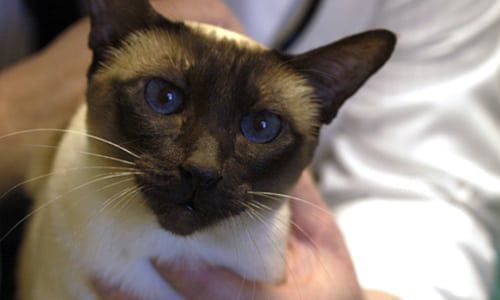Dispelling the Myths of Pet Cancer Treatment
There are many misconceptions regarding pet cancer care treatments. Below, we have listed a few of the most common myths along with explanations as to why they are false. If after reading these, you still have questions or concerns about treating your pet’s cancer, please contact us. We’re happy to schedule a consultation at one of our convenient locations in Westford, MA or Windham, NH to see your pet and answer any additional questions you may have.
Myth 1: The prognosis is always poor with a cancer diagnosis.
Truth: Every prognosis (the pet’s expected lifespan after being diagnosed with cancer) depends on the type of cancer and how advanced it is at the time it is diagnosed. Many cancers can be effectively managed for an extended period of time.
Myth 2: My pet has been diagnosed with cancer, but he seems fine, so it’s okay to watch and wait.
Truth: Early detection and treatment is key to the best outcome possible for your pet. Surgery is less complicated with smaller tumors, and chemotherapy and radiation are more effective in the early stages of the disease. However, if your pet’s cancer is more advanced at the time of diagnosis, there can still be options to help maintain an excellent quality of life for a period of time. Treating your pet’s cancer while he feels good can improve the prognosis and response to treatment.
Myth 3: There is only one treatment option for cancer.
Truth: Chemotherapy is one treatment option for cancer. Other modalities to treat cancer are radiation, surgery, and immunotherapy. The oncologist will discuss which treatment or combination of treatments is most appropriate for your pet’s cancer. We work hard to personalize a therapeutic plan that works best for you and your pet.
Myth 4: Cancer treatment is too expensive.
Truth: The cost of treatment is dependent on many factors, and there are moderately priced options that may be appropriate to treat your pet’s cancer. The oncologist can discuss your options and will come up with a treatment plan that’s right for you and your pet.
Myth 5: Chemotherapy will make my pet sick.
Truth: The number one goal of chemotherapy is to maintain the quality of life for as long as possible. The chance of significant side effects of this treatment is less than 10% in most cases. If side effects do occur, they tend to be temporary, and they resolve within a few days.
Myth 6: My pet is too old to undergo therapy.
Truth: Age is not a disease. As long as they are otherwise healthy, dogs and cats can tolerate chemotherapy treatment very well, regardless of age.
Myth 7: My pet will have frequent long visits to the hospital.
Truth: Treatment protocols range from once a week to once a month. Most on-going treatment visits are on an out-patient basis and are scheduled for 30 minutes.
Myth 8: My pet’s quality of life will be reduced during therapy.
Truth: Our goal is to extend an excellent quality of life, longer than would otherwise be possible without treatment. Your pet’s quality of life will never be sacrificed just to buy more time.
Myth 9: My pet will go bald during chemotherapy.
Truth: Most cats and dogs have fur—not hair—and their fur is not continuously growing. For this reason, most pets do not go bald during therapy. However, there are a few breeds of dogs with continuously growing hair that can experience hair loss, and cats may lose their whiskers.
Myth 10: My pet’s daily activities will need to change during treatment.
Truth: Pets continue to live normal active lives during therapy. There are no restrictions on their activities. We have successfully treated police dogs, agility dogs, and assistance dogs who all have continued to perform at a high level throughout their treatment. With this in mind, you should expect your dog to continue to do all his normal activities while undergoing chemotherapy.















